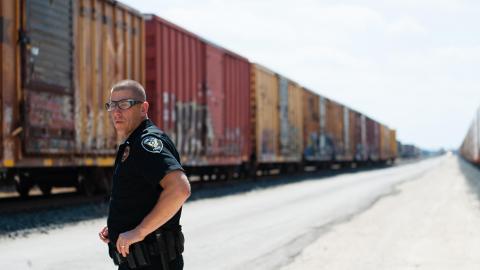As the United States and the global economy face a multitude of challenges in shipping, U.S. West Coast ports, which include the Port of Los Angeles, Port of Long Beach, Port of Tacoma, Port of Seattle, and the Port of Oakland, play a vital role. Here’s how.
West Coast Ports Offer Faster Service to Inland Markets
How can the U.S. West Coast ports help shippers import and export products faster? The West Coast ports have significantly shorter over-the-water transit times than the East Coast ports – a difference of more than two weeks in some instances. That can make a big difference when American businesses are eager to push product to market, while overseas customers are anxious to receive the products they need.
When shipping over the water between North American ports and Asia, average transit times are as follows:
• U.S. East Coast ports via the Suez Canal: ~31 days
• U.S. East Coast ports via the Panama Canal: ~27 days
• U.S. West Coast ports across the Pacific: ~14 days
Trade route disruptions can also impact shipping options. The Red Sea and Panama Canal challenges, and East/Gulf coast ILA labor negotiations inject uncertainty into the supply chain and add to over-the-water transit times.

Transit times from West Coast ports have significantly shorter over-the-water transit times than the East Coast ports.
West Coast Ports are Positioned for Growth
West Coast ports have the capacity to keep freight moving with the largest port infrastructure in North America, including an abundance of warehouses to store products, the largest rail terminal capacity, and available container capacity on ocean carriers. They maintain the largest international intermodal footprint in North America.
Union Pacific continues to invest in our intermodal terminals to provide capacity and fluidity to customer shipments and improve round-trip economics.
These five ports have direct access to an array of intermodal services such as warehousing, cross docking/transloading and trucking. Union Pacific continues to open new markets, highlighted by the first-of-its-kind intermodal service between the LA Basin and Phoenix, serviced by the Union Pacific Phoenix Intermodal Ramp. This round-trip service allows customers to convert truck traffic to rail, saving more than 350 truck miles between LA and Phoenix. The route takes thousands of trucks off the road per year and results in greenhouse gas emission savings of up to 75%.
West Coast Ports Offer a Sustainable Solution
Each port maintains an efficient, sustainable supply chain. Driven by shorter transit, U.S. West Coast ports have the lowest carbon footprint per TEU for cargo originating from Asia — emissions are on average 17% lower shipping through the West Coast vs East Coast (Asia to Chicago).
Technology and sustainability work together to reduce energy consumption, pollution and greenhouse gas emissions. Union Pacific is improving freight car designs, leveraging fuel-efficient locomotives and working with port marine terminals to operate energy efficient hostlers and cranes.
Learn More
Between market access, faster over-the-water transit times, service frequency and ample growth capacity, U.S. West Coast ports provide shippers speed-to-market and flexibility to move their products and serve their customers. For companies sourcing product from Asia or for those that have product on the ground and want to move it offsite quickly to buyers in Asia, shipping through U.S. West Coast ports is the fastest and most flexible option.
Click here to learn more about shipping products into and out of the U.S. West Coast ports and moving products to the coast by rail, or contact a member of our Sales team.









